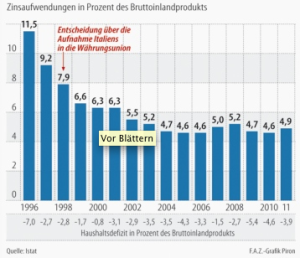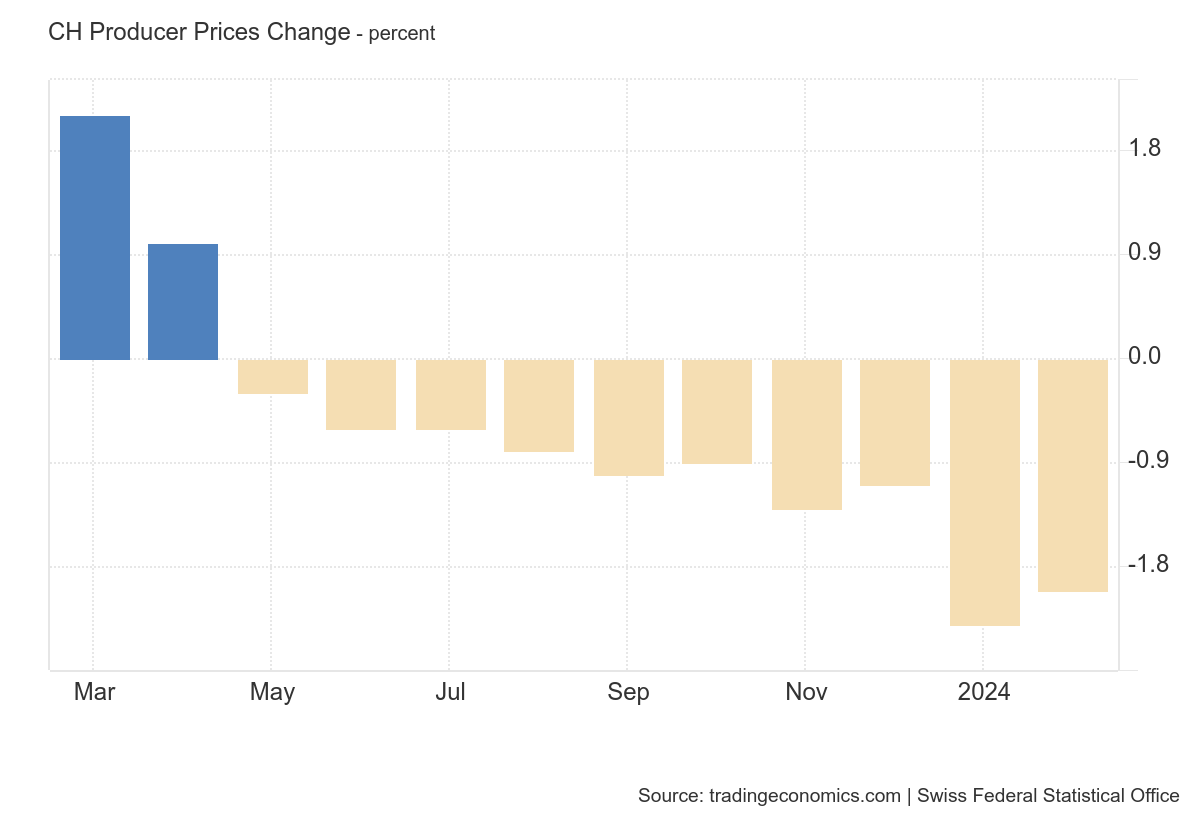Just a little wrap-up of two tweets read in 5 minutes, to which I finally added a bit more out of my recent Tweets.
One Tweet:
The British finance minister Osborne has emphasized that the euro zone needs to protect its peripheral economies.
“The whole of Europe needs to become more competitive and productive. That means reforming welfare systems, investing in infrastructure, more job-friendly employment laws, better education and lower business taxes,”
The other Tweet:
In the meantime the hero of the English-speaking press Super-Mario Monti, raised the tax on commercial property (IMU) by +243% YoY.
The Effects of the Monti Reforms
The main positive measure of the Monti reforms is the increase of the pension age to 66, the inflation adjustment will be eliminated, the pension system will switch to defined contribution resulting in an average decrease of the pensions of 15%. That italians confronted with this decrease in pensions, stop consuming and save more, is it a wonder ?
On the other side Italy’s tax burden is to increase to 45.1% from 42.5% in 2011. VAT rises from 21% to 23%, workers’ contribution rise between 130 Euro and 1700 Euro per person. As said above property tax increases enormously. Strange that these leading economists, that worked previously for the ECB, seem to have never heard about the Laffer curve …
Here the full of reforms in our Google blog.
After Italy managed to reduce its debt-service costs from 11.5% in 1996 down to 4.6% thanks to the euro introduction they are estimated to rise again, namely to 5.4% in 2013 and 5.6% in 2014. The following graph from the FAZ compares the debt-service costs above with the increase of the GDP below.
But thanks to the Monti “economic wonder” the Italian primary surplus would rise from 1% in 2011 to 3.6% in 2012 and 5.7% in 2015. This would help to reduce the deficit from 120.3% of GDP in 2012 to 110.8% by 2015.
But already in April he admits that his initial growth perspective was not realistic and reduce the growth expectations a minus 1.2% of GDP in 2012 and slow growth between 0.5% and 1.2% till 2015. Since the pension reforms will not lead to enough income for rising the primary surplus, more tax increases are looming, which again will harm growth. A vicious cycle.
Different Estimations on the italian future and its future debt
The leader of the Italian statistics body (ISTAT) recently said that Italy has lost 20 years. The real incomes are 4% under the ones of 1992. Productivity rose between 1995 and 2007 by 0.4%, whereas it was 2.2% in the rest of the EU. Applied to all production factors it was even -0.14% per year.
Some leading economists had to estimate the probability that Italy is able to pay back its debt.
The positive one (Nicola Borri, Gianfranco di Vaio, Giuseppe Ragusa) takes as premise of their analysis the official Monti budget above:
Italy is supposed to have a primary surplus of 4.6% in 2016 like it had before the financial crisis and even before the introduction of the Euro (when it was able to devalue the currency).
However they state: “The goal of economic adjustment is within reach, but, as also pointed out by Manasse (2011), requires hard sacrifices in terms of future primary balances.”
The negative one of Barclays Capital, however, assumes only a primary surplus between 0% and 2% and foresees that Italy will “wreck the Eurozone”.
Ask just some more Italians: They will say: Like all Italian governments they promise but they do not hold what they promise. They just increase taxes, but nothing will change. If they are called Berlusconi, who does everything to upset to the English-speaking papers or Monti, who is nice and eloquent to them.
Personal Opinion
The author of this blog studied in Rome in 1992/1993 at the famous University La Sapienza, he speaks perfectly Italian, stays often in Italy, loves the Italian mentality and culture. At that time he realized that the differences as for bureaucracy and functioning of labour markets and society between Italy on one side and Germany & Switzerland on the other side are very big. Recent stays in Italy and the discussions with his Italian friends have confirmed that between 1992 and 2012 effectively nothing has changed. On the contrary life in Italy has become more difficult, the bureaucracy is becoming bigger and bigger. According to my friends the only one who has the possibilities to escape is the entrepreneur: He is able to abuse the employees paying low salaries and giving only fixed-term contracts. The recent labour reforms only improve the position of the employer, the potential tax evader. Most italian companies are small family enterprises, where succession and heritage does not imply that the right person looks after the company. These owners often do not really care about innovation. The recent crackdown on the employers in Cortina d’Ampezzo showed only the top of the iceberg of the malfunctioning.
Are you the author? Previous post See more for Next post
Tags: debt,ECB,Eurozone,Monti,Other Periphery,Silvio Berlusconi,Swiss National Bank,Switzerland







































1 ping
Italy: Italy About the Hypocrisy of Politicians and the Blindness of the | Euro Economy
2014-01-07 at 10:33 (UTC 2) Link to this comment
[…] Read more: Italy: Italy About the Hypocrisy of Politicians and the Blindness of the […]